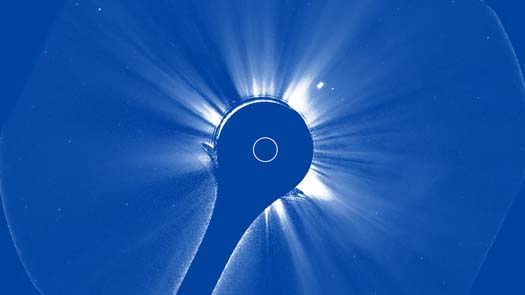Science: The first images from a new space-based telescope launched into Earth orbit to monitor the sun captured the outbreak of a stunning solar storm. The National Oceanic and Atmospheric Administration (NOAA) shared the first images taken by its Compact Coronagraph (CCOR-1), the world’s first operational space-based coronagraph. CCOR-1 is mounted on NOAA’s newest geostationary satellite, GOES-19, which was launched into orbit above Earth on June 25.
CCOR-1 began its mission to observe the sun’s corona — the outermost layer of the solar atmosphere — on September 19. The powerful solar telescope uses an occulting disk, visible as a dark blue circle in the images, to block light coming from the sun. This instrument, called a coronagraph, allows the telescope to observe the sun’s corona, which would otherwise be hidden by the bright light of the sun’s surface. CCOR-1 marks a significant advance in space weather monitoring. Compared to ground-based instruments, space-based coronagraphs don’t have to deal with Earth’s atmosphere, which can scatter light and affect the clarity of observations. This means CCOR-1 has an uninterrupted view of the sun’s corona.
CCOR-1 is designed to capture new images of the sun’s corona every 15 minutes, providing advance warning of coronal mass ejections (CMEs) — large ejections of plasma and magnetic fields thrown from the sun into space — which can trigger geomagnetic storms on Earth. While other space-based coronagraphs have been used in the past, NOAA says these previous instruments were used for scientific research while CCOR-1 “will be used operationally for routine, real-time activities and monitoring.”
